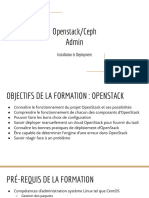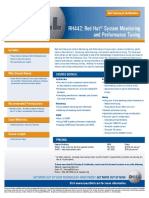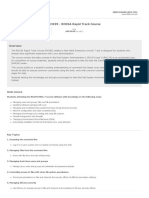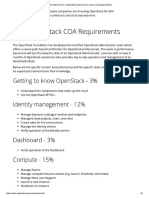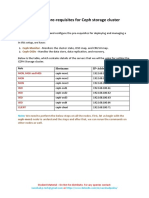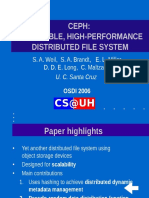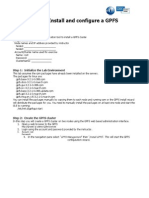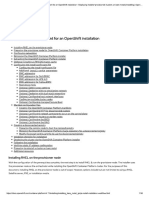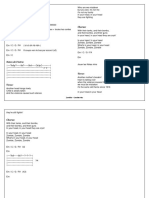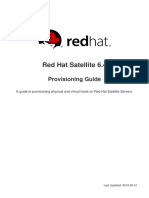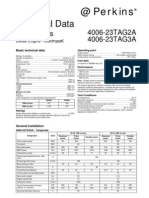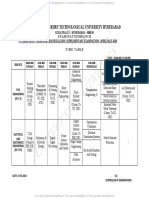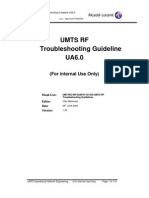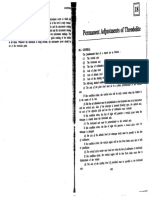RED H
AT C
EPH S
TORAGE C
HEAT S
HEET
Summary of Certain Operations-oriented Ceph Commands
Note: Certain command outputs in the Example column were edited for better readability.
Monitoring and Health
Command Purpose Example
ceph -s Show status # ceph -s
summary cluster 1c528497-24e0-4af7-bb18-d43a8d31cecc
health HEALTH_OK
ceph -w Watch ongoing
status
rados df Show per pool and # rados df
total usage
pool_name rbd total_objects 176
used 700M total_used 9220M
objects 176 total_avail 4824G
clones 0 total_space 4833G
copie 528
missing_on_primary 0
unfound 0
degraded 0
rd_ops 0
rd 0
wr_ops 351
wr 700M
ceph df Show disk usage # ceph df
overview, global
and per pool GLOBAL POOLS
size 11172G name rbd
avail 11172G ID 0
raw used 501M used 0
%raw 0 %used 0
max avail 3724G
objects 0
ceph Show details about # ceph health detail
health health issues HEALTH_WARN mon.ceph4 low disk space; mon.ceph5 low disk space;
detail mon.ceph6 low disk space
mon.ceph4 low disk space -- 18% avail
mon.ceph5 low disk space -- 22% avail
mon.ceph6 low disk space -- 16% avail
1 | Red Hat Ceph Storage Cheat Sheet
�
ceph osd df Show disk usage # ceph osd df tree
tree linked to the CRUSH
tree ID -1 -2 0 3 4 8
weight 10.91034 3.63678 0.90919 0.90919 0.90919 0.90919
reweight - 11172G - 3724G 1.00000 1.00000 1.00000 1.00000
size 501M 168M 931G 931G 931G 931G
use 11172G 3724G 44760k 42752k 42804k 42616k
avail 0.00 0.00 931G 931G 931G 931G
%use 1.00 1.01 0.00 0.00 0.00 0.00
var 0 0 1.05 1.0 1.0 1.0
type root host 69 63 62 62
name default ceh3 ods.0 ods.3 ods.4 ods.8
Working With Pools and OSDs
Subcommands of the "c
eph osd" command
Command Purpose Example
ceph osd tree Lits hosts, their # ceph osd tree
OSDs, up and down
status, OSD weight, ID -1 -10 0 3 6
local reweight class hdd hdd hdd
weight 4.72031 2.71317 0.90439 0.90439 0.90439
type name root default host osd.0 osd.3 osd.6
status up up up
reweight 1.00000 1.00000 1.00000 1.00000 1.00000
PRI-AFF 1.00000 1.00000 1.00000 1.00000 1.00000
ceph osd stat Print a summary of # ceph osd stat
the OSD map 9 osds: 9 up, 9 in
ceph osd Instruct Ceph to # ceph osd deep-scrub osd.0
deep-scrub <id> perform a deep osd.0 instructed to deep-scrub
scrubbing process
(consistency check)
on an OSD.
ceph osd find Display location of # ceph osd find 0
<id> a given OSD (host {
name, port, and "osd": 0,
CRUSH details) "ip": "10.12.xxx.xxx:6804/61412",
"crush_location": {
"host": "ceph4",
"root": "default"
}
ceph osd map Locate an object # ceph osd map rbd benchmark_data_ceph1_268097_object865
pool object from a pool. osdmap e115 pool 'rbd' (3) object
Displays primary 'benchmark_data_ceph1_268097_object865' -> pg 3.c9f193ff (3.7f) -> up
and replica ([4,6,8], p4) acting ([4,6,8], p4)
placement groups
for the object
2 | Red Hat Ceph Storage Cheat Sheet
�
ceph osd Display OSD # ceph osd metadata 0
metadata <id> metadata (host and {
host info) "id": 0,
"arch": "x86_64",
"back_addr": "10.12.xxx.xxx:6805/61412",
"back_iface": "eno1",
ceph osd out Take an OSD out of # ceph osd out 0
<id> the cluster, marked out osd.0
rebalancing its data
to other OSDs.
ceph osd pool Create a new # ceph osd pool create test 64 64
create replicated pool with pool 'test' created
<pool-name> a number of
<pg-number> placement groups.
<pgs-number> Use the C
eph
Placement Groups
(PGs) per Pool
Calculator to
determine the
number of
placement groups.
Also, see P
ools in
the Administration
Guide.
ceph osd pool Delete a pool. # ceph osd pool delete test test --yes-i-really-really-mean-it
delete Specify the pool pool 'test' removed
<pool-name> name twice
<pool-name> followed by
--yes-i-really-re confirmation. Be
ally-mean-it careful when
deleting pools
because this action
cannot be reverted.
ceph osd pool Get all parameters # ceph osd pool get rbd all
get <pool> all for a pool. Specify size: 3
pool name for min_size: 2...
specific pool.
ceph osd pool ls List pools and # ceph osd pool ls detail
detail details of pools. pool 1 'rbd' replicated size 3 min_size 2 crush_rule 0 object_hash rjenkins
pg_num 128 pgp_num 128 last_change 65 flags hashpspool stripe_width 0
ceph osd pool Set a pool # ceph osd pool set rbd min_size 1
set <parameter> parameter, for set pool 1 min_size to 1
<value> example, “size”,
“min_size”, or
“pg_num”
ceph osd Temporarily # ceph osd reweight 0 0.5 # use 50% of default space on osd.0
reweight <id> override weight for
<weight> an OSD.
3 | Red Hat Ceph Storage Cheat Sheet
�
ceph osd Change the weight # ceph osd reweight-by-utilization 110
reweight-by-util of OSDs based on moved 7 / 576 (1.21528%)
ization their utilization. avg 64
<percent> See S et an OSD’s stddev 26.7623 -> 26.8328 (expected baseline 7.54247)
Weight by min osd.1 with 18 -> 18 pgs (0.28125 -> 0.28125 * mean)
Utilization in the max osd.4 with 102 -> 102 pgs (1.59375 -> 1.59375 * mean)
Storage Strategies
Guide.
ceph osd scrub Initiate a "light" # ceph osd scrub osd.0
<id> scrub on an OSD. osd.0 instructed to scrub
ceph osd Test how setting an # ceph osd test-reweight-by-utilization 110
test-reweight-b OSD weight based no change
y-utilization on utilization will moved 3 / 576 (0.520833%)
<percent> reflect data avg 64
movement.
ceph osd set Set various flags on # ceph osd set noout
<flag> the OSD
subsystem. See
Overrides in the
Administration
Guide.
Working With Placement Group
Subcommands of the "c
eph pg" command
Command Purpose Example
ceph pg Query statistics and other # ceph pg 1.c query
pg-id metadata about a placement {
query group. Often valuable info for "state": "active+clean",
troubleshooting, for example "snap_trimq": "[]",
the state of replicas, past "epoch": 72,
events, and other. "up": [
7,
3,
8
],
ceph pg pg-id List unfound objects. The # ceph pg 1.c list_missing
list_missing “ceph pg p g-id q
uery” {
command lists more "num_missing": 0,
information about which "num_unfound": 0,
OSDs contain unfound "objects": [],
objects. See U nfound Objects
in the Troubleshooting Guide.
ceph pg dump Show statistics and metadata # ceph pg dump
[--format for all placement groups dumped all
format] including information about version 1409550
scrub processes, last stamp 2017-10-24 08:51:54.763931
replication, current OSDs, last_osdmap_epoch 0
blocking OSDs, and so on. last_pg_scan 0
Format can be plain or json. full_ratio 0
nearfull_ratio 0…
4 | Red Hat Ceph Storage Cheat Sheet
�
ceph pg Show stuck placement # ceph pg dump_stuck unclean
dump_stuck groups (PGs).See I dentifying ok
inactive | Troubled Placement Groups
unclean | stale | in the Administration Guide. pg_stat 3.6 3.6
undersized | active+undersized+ active+undersized+
stat
degraded degraded degraded
up [7,8] [8,4]
up_primary 7 8
acting [7,8] [8,4]
acting_primary 7 8
ceph pg scrub Initiate the scrub process on # ceph pg scrub 3.0
pg-id the placement groups instructing pg 3.0 on osd.1 to scrub
contents.
ceph Initiate the deep scrub # ceph pg deep-scrub 3.0
deep-scrub process on the placement instructing pg 3.0 on osd.1 to deep-scrub
pg-id groups contents.
ceph pg repair Fix inconsistent placement # ceph pg repair 3.0 instructing pg 3.0 on osd.1 to repair
{pg-id} groups. See R epairing
Inconsistent Placement
Groups in the
Troubleshooting Guide.
Interaction With Individual Daemons
Subcommands of the "c eph daemon <daemon-name>" command. These commands interact with individual daemons
on the current host. Typically, they are used for low-level investigation and troubleshooting. Specify the target daemon
by its name, for example "osd.1", or by using a path to the daemon’s socket file. For example,
"/var/run/ceph/ceph-osd.0.asok".
Command Purpose Example
ceph daemon Show a list of currently active # ceph daemon osd.0 dump_ops_in_flight
<osd.id> operations for an OSD. Useful if {
dump_ops_in_fli one or more operations are "ops": [
ght inactive, stuck or blocked. {
"description": "osd_op(client.24153.0:45 3.33
3:cd6d298e:::benchmark_data_ceph1_268097_object44:h
ead [set-alloc-hint object_size 4194304 write_size
4194304,write 0~4194304] snapc 0=[]
ondisk+write+known_if_redirected e115)",
"initiated_at": "2017-10-24
ceph daemon Print a list of commands a daemon # ceph daemon osd.0 help
<daemon-name> supports {
help "calc_objectstore_db_histogram": "Generate key value
histogram of kvdb(rocksdb) which used by bluestore",
"compact": "Commpact object store's omap. WARNING:
Compaction probably slows your requests"...
5 | Red Hat Ceph Storage Cheat Sheet
�
ceph daemon Print high level status information # ceph daemon mon.ceph1 mon_status
<daemon-name> for a Monitor {
mon_status "name": "ceph1",
"rank": 0,
"state": "leader",
"election_epoch": 6,
"quorum": [
0,
1,
2
],
ceph daemon Print high level status information # ceph daemon osd.0 status
<osd.id> status for an OSD {
"cluster_fsid":
"82282e8f-b8ff-4ec2-b564-e06a3e514fb7",
"osd_fsid": "f05ea8f0-df33-440b-8921-511a93f2ec96",
"whoami": 0,
ceph daemon Print performance statistics. See # ceph daemon client.radosgw.primary perf dump
<daemon-name> Performance Counters in the { "cct": {"total_workers": 16, "unhealthy_workers": 0 },
perf dump Administration Guide for details. "client.radosgw.primary": { "req": 1156723,...
Authentication and Authorization
For details, see M
anaging Users in the Administration Guide.
Command Purpose Example
ceph auth list List users # ceph auth list
installed auth entries:
osd.0
key:
AQDUIcRZKW5JERAA+DFBSVZLsmd0gj
FK6TxS7A==
caps: [mgr] allow profile osd
caps: [mon] allow profile osd
caps: [osd] allow *
ceph auth Get user details, or create the user if it does not exist # ceph auth get-or-create client.rbd mon
get-or-create yet and return details. 'allow r' osd 'allow rw pool=rbd'
[client.rbd] key = Axxxxxxxxxxx==
ceph auth Delete a user # ceph auth del updated
delete
ceph auth caps Add or remove permissions for a user. Permissions # ceph auth caps client.bob mon 'allow *'
are grouped per daemon type ( mon, osd, mds). osd 'allow *' mds 'allow *' updated caps
Capabilities can be 'r', 'w', 'x' or '*'. See A
uthorization for client.user1
(Capabilities) in the Administration Guide for details.
6 | Red Hat Ceph Storage Cheat Sheet
�
Object Store Utility
The RADOS Object Store utility commands
Command Purpose Example
rados -p pool put Upload a file into a pool, name the resulting object. # rados -p rbd put myfile myfile.txt
object file
rados -p pool ls List objects in a pool # rados -p rbd ls
rados -p pool get Download an object from a pool into a local file. Give # rados -p rbd get myfile - new.txt
object file '-' as a file name to write to standard output
rados -p pool rm Delete an object from a pool # rados -p test rm myfile
object
rados -p pool List watchers of an object in pool. For instance, the # rados -p rbd listwatchers
listwatchers head object of a mapped rbd volume has its clients benchmark_data_ceph1_268097_object
object as watchers 865watcher=12.10.x.x:0/330978585
client.28223 cookie=1
rados bench Run the built-in benchmark for given time in # rados bench -p rbd 120 write
seconds mode [-b seconds. Mode can be write, seq, or rand (latter are --no-cleanup
object-size ] [-t read benchmarks). Before running one of the hints = 1
threads ] reading benchmarks, run a write benchmark with Maintaining 16 concurrent writes of
the –no-cleanup option. The default object size is 4 4194304 bytes to objects of size 4194304
MB, and the default number of simulated threads for up to 120 seconds or 0 objects
(parallel writes operations) is 16. See B
enchmarking
Performance in the Administration Guide for details.
7 | Red Hat Ceph Storage Cheat Sheet





